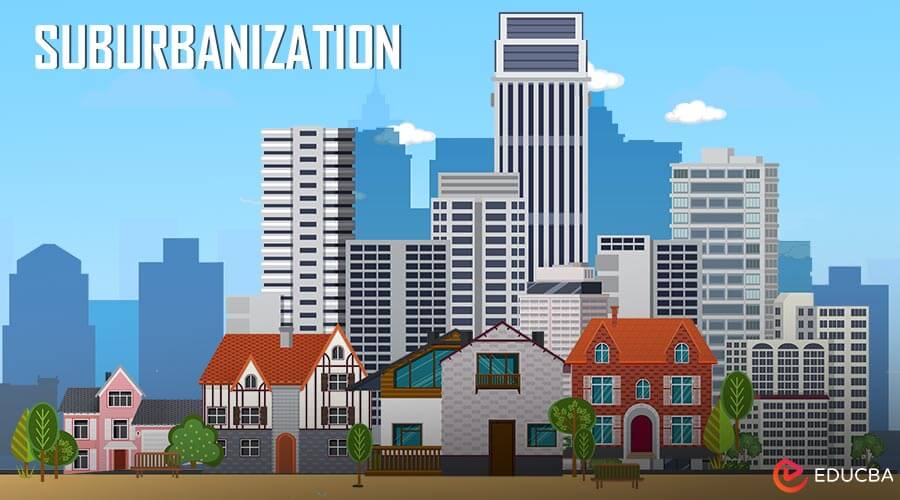Suburbanisation Definition Geography: Meaning, Causes, Consequences & Examples

Suburbanisation definition geography refers to the process by which populations and businesses move from central urban areas to the outskirts of cities, creating low-density residential zones called suburbs. This outward migration often occurs because people desire larger homes, gardens, and quieter living environments. Understanding suburbanisation definition geography is crucial for GCSE and A-Level students, as it explains how cities evolve beyond their historical cores and how urban landscapes transform over time.
The study of suburbanisation definition geography also highlights the interaction between social, economic, and technological factors. As cities expand outward, land use patterns change, infrastructure develops, and demographics shift. Examining suburbanisation provides insight into historical and modern urban trends, helping students and planners address challenges like sustainable growth, efficient transport networks, and balancing the needs of urban and suburban communities.
What is Suburbanisation?
Suburbanisation definition geography describes the outward movement of people from densely populated city centres to suburban areas. This process often leads to the creation of new housing estates, shopping centres, and business parks at the urban fringe. Unlike urbanisation, which involves the general growth of cities, suburbanisation specifically focuses on expansion into previously rural or undeveloped areas. It is a key concept in human geography for understanding settlement patterns and urban development.
Historically, suburbanisation definition geography in the UK emerged during the Industrial Revolution. Overcrowded and polluted city centres prompted families to move to the outskirts in search of better living conditions. The trend continued in the 20th century with improved transportation such as railways and roads, allowing commuting from suburbs to city jobs. Today, suburbanisation continues to shape cities across the UK and worldwide, influencing urban planning decisions.
Causes of Suburbanisation
Suburbanisation definition geography is driven by multiple social factors. Many families prefer suburban areas for larger homes, safer communities, and access to high-quality schools and healthcare facilities. The pursuit of a quieter lifestyle with green spaces and less congestion also encourages people to leave city centres, leading to outward population movement and the creation of sprawling suburban areas.
Economic factors play a significant role in suburbanisation definition geography. Housing and land costs are often lower in suburban areas, attracting both residents and businesses. Companies relocate to the suburbs to reduce operational costs while maintaining access to urban markets. Additionally, improved transport networks, including highways and commuter trains, enable longer commutes, making suburban living feasible for a growing number of people.
Consequences of Suburbanisation

Suburbanisation definition geography has profound impacts on both urban and rural environments. Urban sprawl consumes farmland and natural landscapes, disrupting ecosystems and reducing biodiversity. As suburbs grow, rural areas are transformed into residential zones, commercial centres, and transport corridors, significantly altering traditional land-use patterns and the character of local communities.
Socially and economically, suburbanisation definition geography changes the distribution of populations and resources. Inner-city areas may face population decline, economic stagnation, and reduced investment, while suburban communities experience growth, rising property values, and infrastructure development. However, increased suburban populations can strain local services such as schools, healthcare, and transport, requiring careful planning to maintain a high quality of life.
Examples of Suburbanisation
In the UK, suburbanisation definition geography can be seen in cities such as London, Manchester, and Birmingham. London’s commuter towns, including Reading, Slough, and Croydon, have expanded rapidly as residents seek affordable housing and improved living conditions while still having access to city jobs. Suburban growth around Manchester and Birmingham shows how transport infrastructure and economic opportunities encourage people to relocate.
Internationally, suburbanisation definition geography is evident in cities like New York, Los Angeles, Paris, and Berlin. These urban areas demonstrate the global nature of suburban growth, with expanding residential zones on city outskirts. Studying these examples provides insights into how economic, cultural, and infrastructural factors shape suburbanisation, allowing urban planners to compare and learn from different approaches worldwide.
Suburbanisation in GCSE and A-Level Geography
Suburbanisation definition geography is a key topic for GCSE students. Understanding its definition, causes, consequences, and examples is essential. Using simple case studies and diagrams helps students visualise population movement from city centres to suburbs. These concepts are often examined in questions related to urbanisation, settlement patterns, and human geography.
For A-Level students, suburbanisation definition geography requires more in-depth analysis. Students explore economic, social, and transport-related causes, as well as policy responses to manage growth. Examining the effects on inner-city decline, suburban development, and rural land provides critical insights. This encourages students to think about sustainable urban planning, population management, and the future structure of cities both in the UK and globally.
Conclusion
Suburbanisation definition geography explains the outward expansion of cities and the formation of suburban communities. By examining its causes, consequences, and examples, students gain a clear understanding of population movements, urban sprawl, and land-use change. Suburbanisation remains an essential concept in geography, highlighting the social, economic, and environmental impacts of urban expansion and the challenges of managing sustainable city growth.
FAQs
What is suburbanisation in geography?
It is the movement of people and businesses from city centres to suburbs, creating low-density residential areas.
What causes suburbanisation in the UK?
Main causes include desire for larger homes, safer communities, better schools, lower housing costs, and improved transport.
How does suburbanisation affect cities and rural areas?
It can cause urban sprawl, loss of farmland, demographic changes, and pressure on suburban infrastructure.
Can suburbanisation have positive effects?
Yes, it provides more housing space, reduces city congestion, and boosts local economies.
What is the difference between suburbanisation and counter-urbanisation?
Suburbanisation is city-to-suburb movement; counter-urbanisation is moving from cities to rural areas.
Give examples of suburbanisation in UK cities.
Examples include Reading, Slough, and suburban growth around Manchester and Birmingham.
Why is suburbanisation important for GCSE and A-Level geography?
It helps understand urban growth, population patterns, social changes, and planning challenges.



